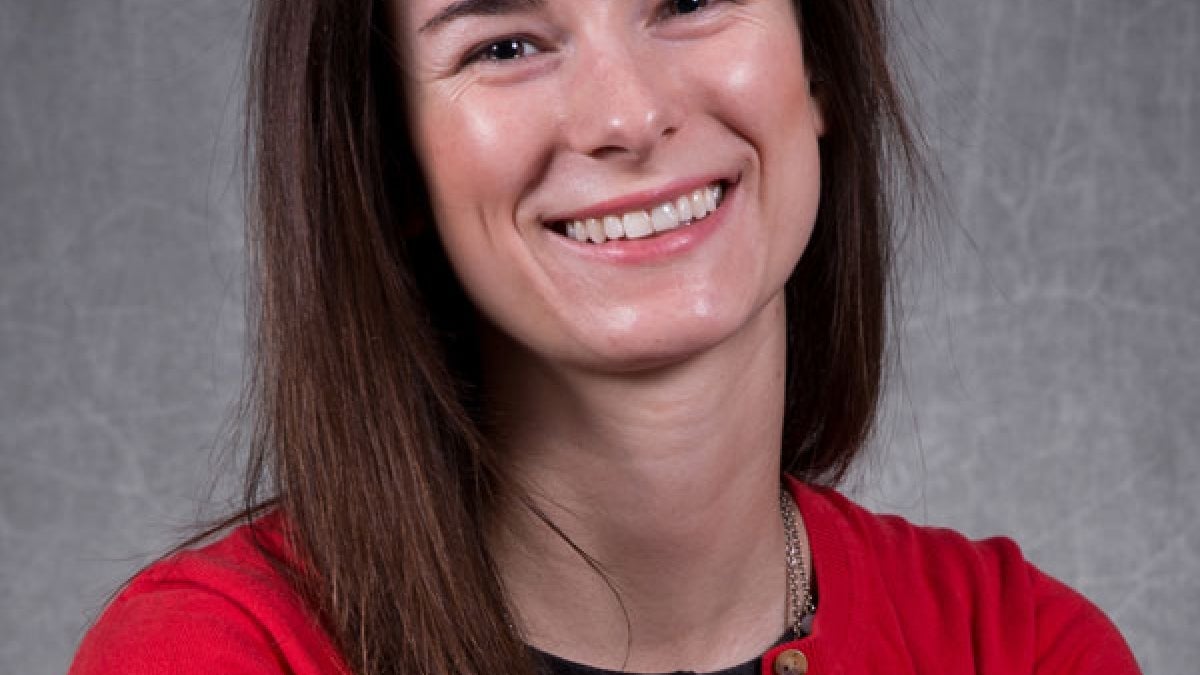Experiences early in life set course for engineering pursuits

Assistant professor of chemical engineering Julianne Holloway
Playing on lacrosse and field hockey teams in high school, Julianne Holloway got some first-hand experience with joint injuries.
At about the same time, she witnessed the difficulties of a relative who had to have a hip replacement while only in her 20s, and face the prospect of multiple surgeries throughout her life to maintain mobility.
Several years later, as a chemical engineering student at Drexel University in Philadelphia, those experiences motivated Holloway to want to do something that would have a positive impact on people’s quality of life.
That goal would lead her to focus on the development of technologies and treatments for remedies to injuries, degenerative diseases and other physical disorders of the musculoskeletal system. Within that field, she is concentrating on pursuit of advances in tissue engineering and regenerative medicine.
Looking forward to collaborative environment
Most orthopedic tissues struggle to heal and regenerate after injury. Holloway wants to contribute to discoveries that would help facilitate regeneration of these tissues to restore the body’s natural mechanical functionality. Such an accomplishment would provide new and better ways to repair damage to knees, hips, the spine and other parts of the body with similar musculoskeletal architecture.
Holloway will now be doing her research at Arizona State University, where this semester she joined the faculty of the Ira A. Fulton Schools of Engineering as an assistant professor of chemical engineering in the School for Engineering of Matter, Transport and Energy.
After earning a doctoral degree in chemical engineering at Drexel, Holloway expanded her range of expertise during three years at the University of Pennsylvania, where her role as a postdoctoral researcher enabled her to delve intensely into aspects of bioengineering, including cell biology and drug delivery.
Holloway says she accepted the offer to join ASU largely because of the emphasis on cross-disciplinary approaches to research and the diversity among faculty and students.
“I’ve always benefited from working in labs with very multidisciplinary groups. Collaborating with people from different backgrounds fosters innovation and creativity,” she says. “It expands your perspective and helps you see connections between different things that you might otherwise have never realized. I hope to bring that kind of working environment into my own lab, with students from different engineering and science disciplines.”
Wide range of interests
Her research spans across several disciplines — primarily chemical, biomedical, materials and mechanical engineering — reflecting an inclination to jump into a range of pursuits that emerged early in her life.
As a teenager she was particularly drawn not only to chemistry and math, but also explored robotics, computer science and artificial intelligence. Her enthusiasm for those interests prompted her mother to encourage her to sign up for a summer research program for high school students at Drexel, where she was assigned to assist in a chemical engineering lab.
“I didn’t understand very much about what I was doing, but it was still really fun. I fell in love with the campus and lab environments, and I never looked back as far as knowing what I wanted to do.” she says.
Despite the affinity for the laboratory and the college classroom, Holloway describes herself as “outdoorsy.” She likes scenic mountainous terrain for hiking, running, rock climbing and biking — pastimes that are among reasons she saw advantages in relocating to Arizona.
The move and the new job location may also spur a broadening of her range as a football fan, with an interest in the fortunes of the ASU Sun Devils gaining equal weight with her loyalty to the Philadelphia Eagles.
More Science and technology

ASU postdoctoral researcher leads initiative to support graduate student mental health
Olivia Davis had firsthand experience with anxiety and OCD before she entered grad school. Then, during the pandemic and as a…

ASU graduate student researching interplay between family dynamics, ADHD
The symptoms of attention deficit hyperactivity disorder (ADHD) — which include daydreaming, making careless mistakes or taking…

Will this antibiotic work? ASU scientists develop rapid bacterial tests
Bacteria multiply at an astonishing rate, sometimes doubling in number in under four minutes. Imagine a doctor faced with a…